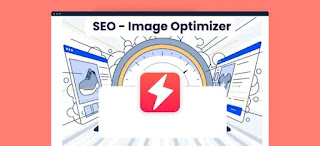Exploring the Depths of SEO Technical: Best Practices for Results
In today’s digital landscape, a strong organic search presence is crucial for any business. But achieving that top spot on search engine results pages (SERPs) requires a multi-pronged approach. This is where the SEO trinity comes in: SEO Analytics, SEO Technical, and Programmatic SEO. These three areas, working in concert, empower you to understand your website’s strengths and weaknesses, ensure it functions flawlessly for search engines, and scale your SEO efforts for maximum impact.
Unveiling the SEO Trinity
Let’s delve deeper into each of these vital SEO
components:
SEO Analytics: Charting Your Course
Think of SEO analytics as the captain navigating your
SEO ship. It equips you with the data and insights to make informed decisions
and track progress. Here’s what it entails:
Keyword Research:
Identifying the terms people use to search for products
or services related to your business. This forms the foundation of your SEO
strategy. Tools like Google Search Console and SEMrush provide valuable keyword
research capabilities.
Traffic Analysis:
Understanding where your website traffic comes from,
which keywords are driving visitors, and how users interact with your site.
Tools like Google Analytics offer a treasure trove of traffic data.
Competitor Analysis:
Analyzing your competitors’ SEO strategies to identify
their strengths and weaknesses, and potential gaps you can exploit. Tools like
Ahrefs and Moz offer competitive analysis features.
Performance Tracking:
Monitoring key metrics like website ranking,
click-through rates (CTRs), and conversions to measure the effectiveness of
your SEO efforts and identify areas for improvement.
SEO Technical: Building a Strong Foundation
SEO technical focuses on the technical aspects of your
website that influence search engine crawlability and usability. It’s akin to
building a solid foundation for your SEO house. Here’s what’s included:
Website Structure:
Ensuring your website has a clear, logical structure
with proper internal linking helps search engines understand your website’s
content and navigate it efficiently.
Mobile-Friendliness:
In today’s mobile-first world, your website must be optimized
for mobile devices to avoid search engine penalties. Tools like Google’s
Mobile-Friendly Test can help.
Page Speed:
A fast-loading website is essential for both user
experience and SEO. Tools like Google PageSpeed Insights can help you identify
areas for speed improvement.
Schema Markup:
Implementing schema markup provides search engines with
additional context about your website’s content, potentially leading to richer
search results.
Security:
A secure website with a valid SSL certificate is crucial
for trust and can also be a positive SEO Analytics factor.
Programmatic SEO: Scaling Your Efforts
Programmatic SEO utilizes automation and technology to
streamline and scale your SEO efforts. It’s like having a tireless crew working
behind the scenes to optimize your website for a vast array of keywords. Here’s
how it works:
Automated Content Creation:
Programmatic SEO tools can generate content for
specific keywords, allowing you to target a wider range of search terms
efficiently.
Large-Scale Landing Page Creation:
These tools can create and optimize numerous landing
pages tailored to specific keyword variations, attracting more targeted
traffic.
Data-Driven Optimization:
Programmatic SEO utilizes data to identify
high-potential keywords and optimize content accordingly, saving time and
resources.
The Power of Collaboration
These three SEO pillars are not isolated entities; they
work best when combined.
Analytics informs technical improvements:
Data from analytics can reveal technical issues
impacting your website’s ranking, allowing for targeted technical SEO fixes.
Technical SEO empowers programmatic SEO:
A technically sound website is crucial for programmatic
SEO tools to function effectively.
Programmatic SEO bolsters analytics:
By generating content for a wider range of keywords,
programmatic SEO provides more data for analytics to track and analyze.
Building Your SEO Strategy
Now that you understand the SEO trinity, how can you
leverage it for your business? Here are some steps to consider:
Start with a solid SEO audit:
Identify your website’s strengths and weaknesses across
technical SEO and content.
Develop a data-driven keyword strategy:
Combine analytics data with competitive analysis to
identify high-value, achievable keywords.
Prioritize technical SEO fixes:
Address critical technical issues impacting your
website’s health and performance.
Implement a content creation strategy:
Develop high-quality content targeted towards your
chosen keywords.
Consider programmatic SEO for scaling your efforts:
Explore programmatic SEO tools if your website caters
to a broad range of keywords or requires frequent content updates.
The SEO trinity — SEO analytics, technical SEO, and programmatic
SEO — represents a powerful framework for optimizing your website and
dominating search engine results pages. Remember, SEO is a marathon, not a
sprint. By consistently monitoring your website’s performance, addressing
technical issues, creating valuable content, and potentially leveraging
programmatic tools, you can build a strong SEO foundation that drives
sustainable growth for your business. Embrace this dynamic trio and watch your
organic traffic soar!





Comments
Post a Comment